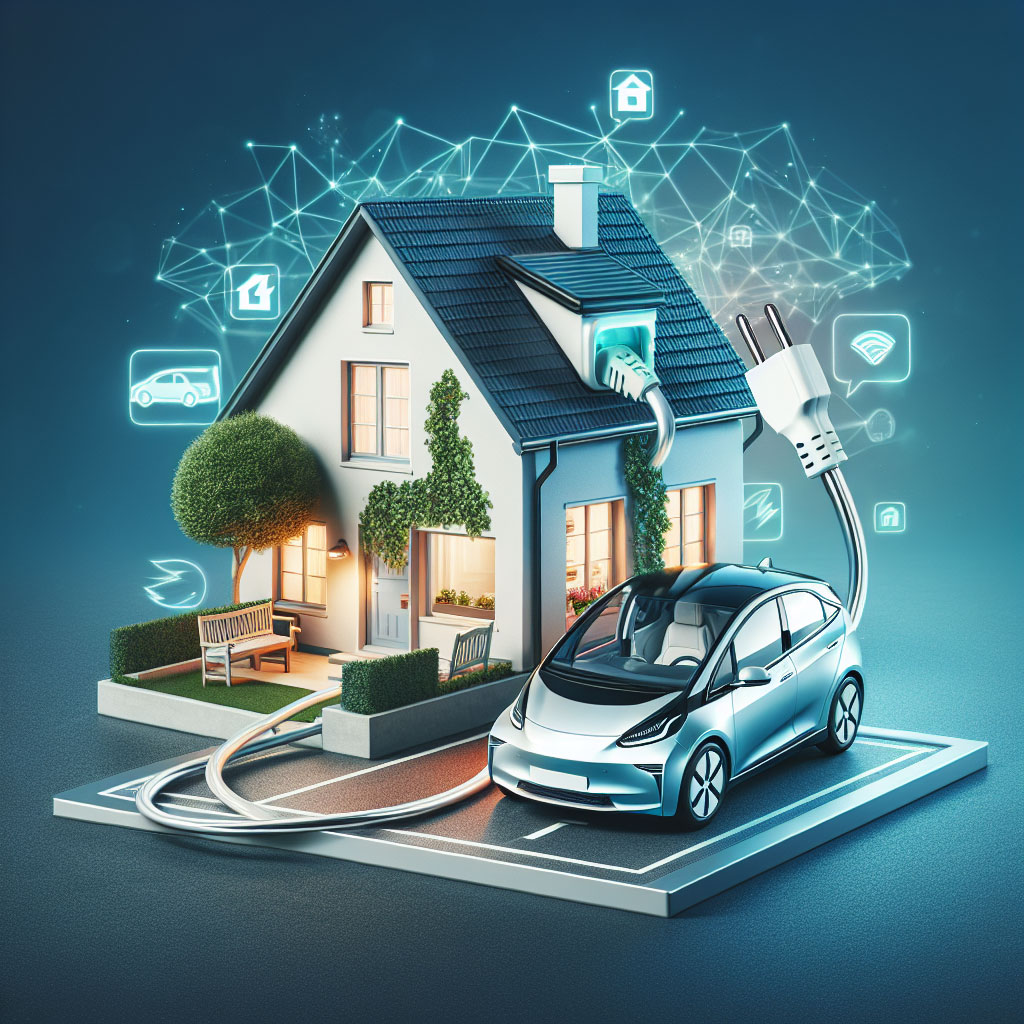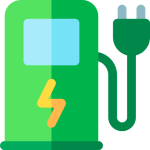
It’s one of the most common questions new EV owners in Australia ask, especially when their mobile charger cable doesn’t quite reach the wall socket: “Can I just use an extension cord?”
The temptation is high, particularly when Level 1 charging is the only option. However, the short answer—as advised by almost every major electric vehicle manufacturer and safety authority—is No. Using a standard, household extension cord to charge your EV is a major safety hazard that can lead to overheating, melted plugs, and, in worst-case scenarios, a house fire.
At EV Evolution, our top priority is safe EV charging. This guide will bust the dangerous myth that you can just ‘plug it in anywhere’ and explain why the constant, high-power draw of an EV requires certified equipment designed for the task.
🛑 The Dangers: Why Standard Extension Cords Fail the EV Test
The core problem lies in the fundamental difference between how an electric vehicle charges and how a typical household appliance operates.
1. Sustained High Current is the Killer
A standard Australian household extension cord is designed for intermittent, low-duty use. Think of a lawnmower running for 30 minutes or a drill running for a few seconds.
Your EV, however, draws a continuous, high-amperage current (typically 10 Amps for a Level 1 portable charger) for 8, 12, or even 24 hours straight.
- Overheating Risk: Most extension cords have internal wiring that is too thin (often 0.75 mm to 1.5 mm). This thin wire creates excessive resistance when carrying a sustained load, leading to rapid heat build-up.
- Melting Hazards: This excessive heat can melt the plastic insulation, the plug pins, and the socket components.7 Since many owners charge overnight, this melting often goes unnoticed until it’s too late, significantly increasing the risk of fire.
2. Voltage Drop and Efficiency Loss
The length of an extension cord directly impacts electrical flow. The longer the cord, the greater the resistance and the more the voltage “drops.”
- Slowed Charging: The voltage drop compromises the stability of the power being delivered, slowing down the already slow Level 1 charge even further.
- Car System Strain: The EV’s onboard charging electronics constantly monitor the incoming power quality. Fluctuating or unstable power can strain the system, potentially leading to errors, fault codes, or damage to the sensitive electronics within the vehicle or the Mobile Charging Unit (MCU).
3. The Lack of Safety Standards
Your EV’s portable charger (often referred to as an EVSE or Mode 2 charger) is a sophisticated piece of equipment with internal safety switches and temperature monitors. When you introduce an unrated, uncertified extension cord into the chain, you create a “weakest link” that bypasses the quality control and safety mechanisms of the certified EV charging system.
Manufacturers are explicit: Chevrolet, Tesla, Nissan, and others all specifically warn against using extension cords, power strips, or adaptors with their charging equipment in their owner’s manuals. They simply cannot guarantee the safety of an aftermarket cord that is not built to handle the required continuous electrical load.
✅ What to Use Instead: Safe, Certified Solutions
If your Level 1 portable charger can’t reach the outlet, you need to select a safe, purpose-built alternative. Your solutions fall into two categories: Permanent and Portable.
Solution 1: Permanent Upgrade (The Best Option)
The safest long-term answer is to eliminate the cord distance problem entirely by upgrading to a dedicated charging location.
- Dedicated Wall Box: The ideal solution is installing a Level 2 wall charger closer to your vehicle. As discussed in our Day 5 guide, this involves a licensed electrician running a dedicated circuit that is properly rated for continuous 32 A charging. This is the only way to ensure 100% safety and efficiency for your daily charging needs.
- Install a Dedicated GPO: If you absolutely must continue using the Level 1 portable charger, have an electrician install a new, dedicated, high-quality General Purpose Outlet (GPO) closer to the vehicle. This ensures the GPO is connected to a dedicated circuit without sharing the load with other household appliances.
Solution 2: The Only Safe Portable Alternative
If you are away from home, in an emergency, or at a remote location, a very specific type of cable can be used, but with extreme caution:
- Heavy-Duty, Rated Extension Cords: You must use an extension lead that is specifically rated for high, continuous loads and built with a significantly thicker gauge wire. In Australia, this means looking for industrial-grade cords rated for at least 15 Amps (even if you are only drawing 10 ), made with thick copper conductors, and featuring durable, heat-resistant moulded plugs.
Crucial Safety Protocol for Emergency Use:
- Uncoil Completely: Never leave the cable coiled up, as this traps heat and drastically increases the risk of fire.
- Monitor Constantly: Do not leave the car charging overnight or unattended. Check the plug and socket connections frequently for any signs of heat (if it’s too hot to touch, turn it off immediately).
- Keep it Short: Use the shortest cable possible to minimise voltage drop and resistance.
🛒 EV Evolution’s Solution: Certified Portable Cables
Rather than risking your vehicle and home with a general-purpose extension cord, the solution is investing in high-quality, manufacturer-approved portable cables and accessories designed for the unique demands of EV charging.
Our recommended products are built to Australian safety standards, featuring:
- Robust Sheathing: IP-rated, tough exterior materials to withstand outdoor use and mechanical stress.
- Superior Gauge Wiring: Thicker copper conductors to minimise resistance and heat generation during long charging cycles.
- Quality Plugs & Sockets: Heat-moulded hardware designed for tight, consistent contact, preventing the ‘arcing’ and heat build-up that melts standard plugs.
For situations where your portable charger doesn’t reach, or for public AC charging, having a longer, high-quality, certified Type 2 cable (Mode 3) is a far safer and more effective solution than any Level 1 extension cord workaround.
Don’t compromise on safety. A few dollars saved on an unrated extension cord is simply not worth the fire risk to your vehicle or property.
Invest in a certified solution today and ensure every charge is a safe one. Browse EV evolution’s range of heavy-duty, certified portable charging cables designed for the Australian environment.
FAQs
Can I ever use an extension cord to charge my EV?
Only as a last-resort, temporary measure and only if the extension lead is specifically rated for continuous high current, is fully uncoiled, kept short and monitored constantly. It is not recommended, and is never a substitute for a dedicated, compliant circuit or a certified wallbox.
What’s the difference between a Mode 2 portable charger and a Mode 3 wallbox?
Mode 2 chargers are in-cable EVSEs that come with many cars for portable use (suitable for low-current charging). Mode 3 wallboxes are fixed installations designed for continuous use with higher current capacity, faster charging, and built-in safety and smart features.
Will using an extension cord void my EV warranty or my home insurance?
Possibly. Many manufacturers explicitly advise against extension cord use in their manuals. Likewise, insurers may question non-compliant installations following a loss. Always read warranty terms and consult your insurer before relying on non-standard charging setups.
How do I know a portable cable or wallbox is compliant for use in Australia?
Look for the Regulatory Compliance Mark (RCM) and manufacturer documentation stating compliance with relevant standards (IEC/AS/NZS where applicable). Buy from reputable suppliers and request spec sheets if unsure.
How much does it usually cost to install a decent home charger?
Costs vary widely. A basic dedicated outlet can be relatively inexpensive; a full Level 2 wallbox installation including device and electrician commonly falls between roughly $1,200 and $4,000 depending on site specifics. Get multiple quotes and ask electricians about future-proofing and local requirements.
About EV Evolution
EV Evolution is the leading online platform dedicated to Australian electric vehicle owners and enthusiasts. We foster a vibrant community, delivering essential EV news and insights, and enhancing user engagement through our innovative, AI-powered chatbot for dynamic discussions. Our mission is to empower Australian electric vehicle owners and enthusiasts by fostering a vibrant, AI-driven online community that connects, informs, and advances the nation’s electric vehicle landscape.




